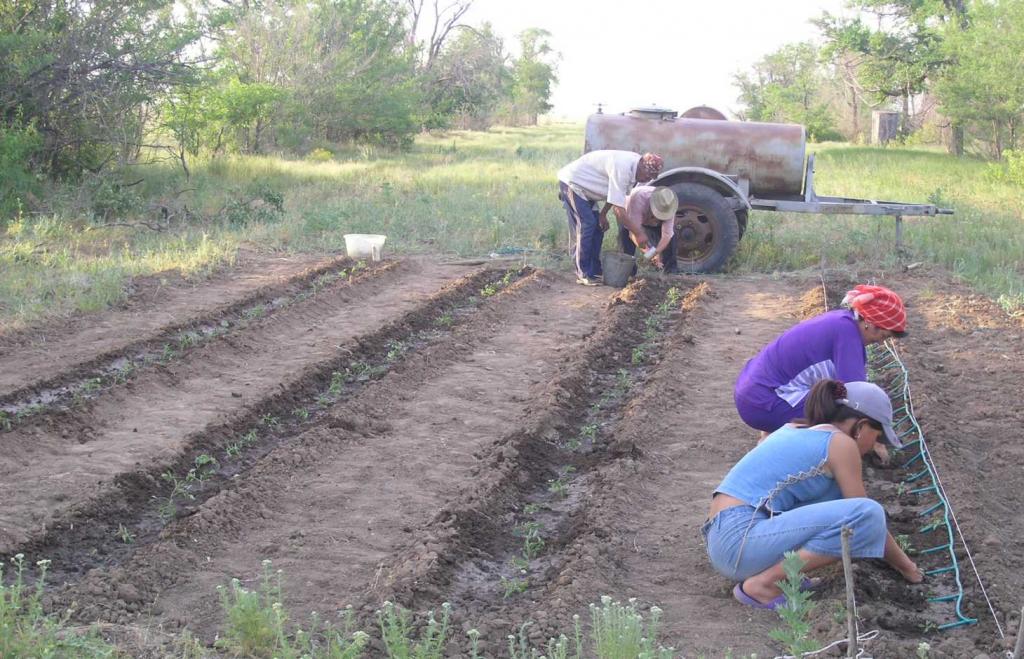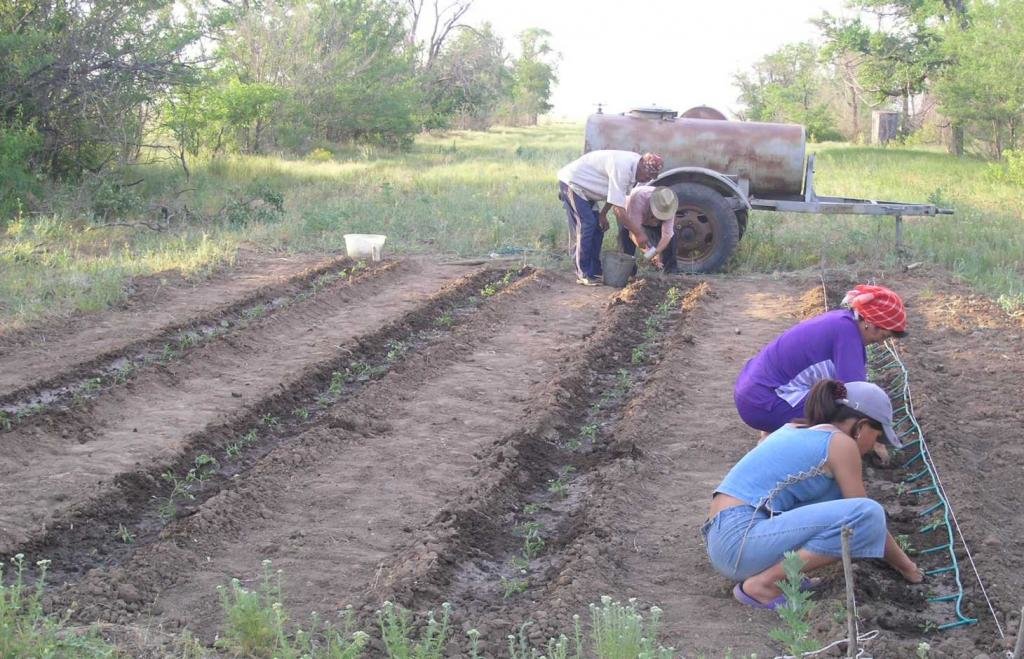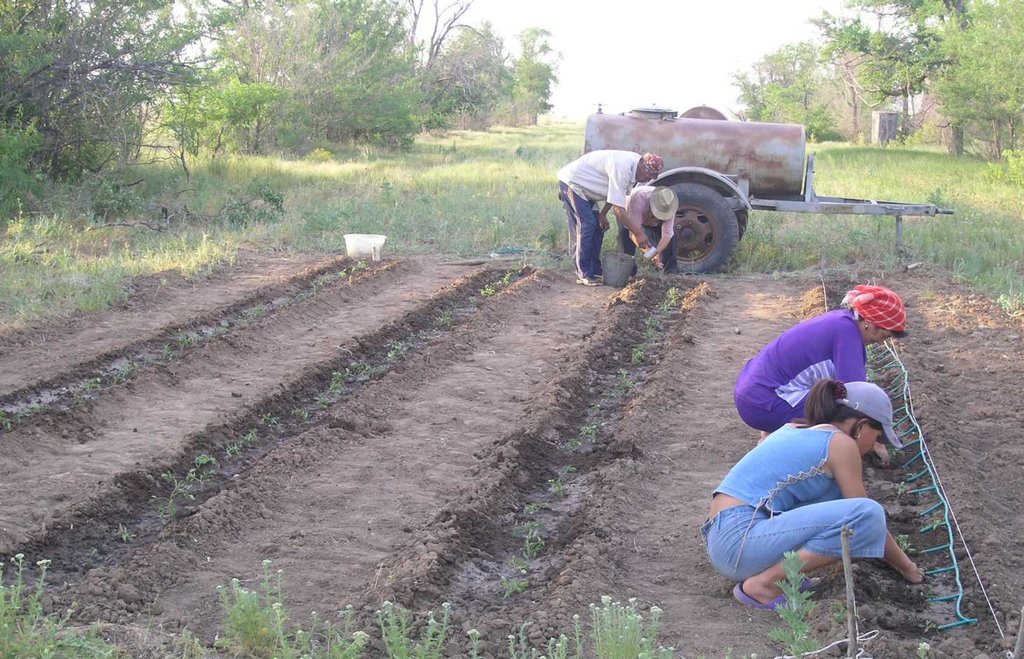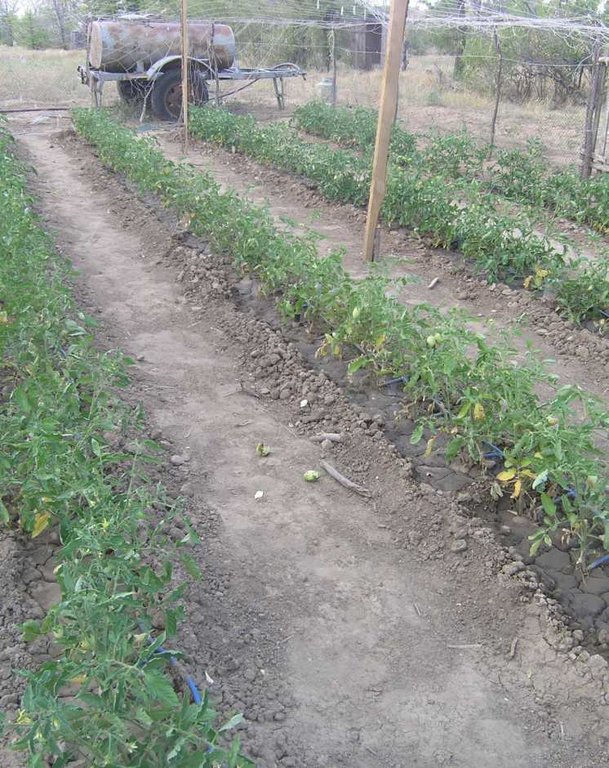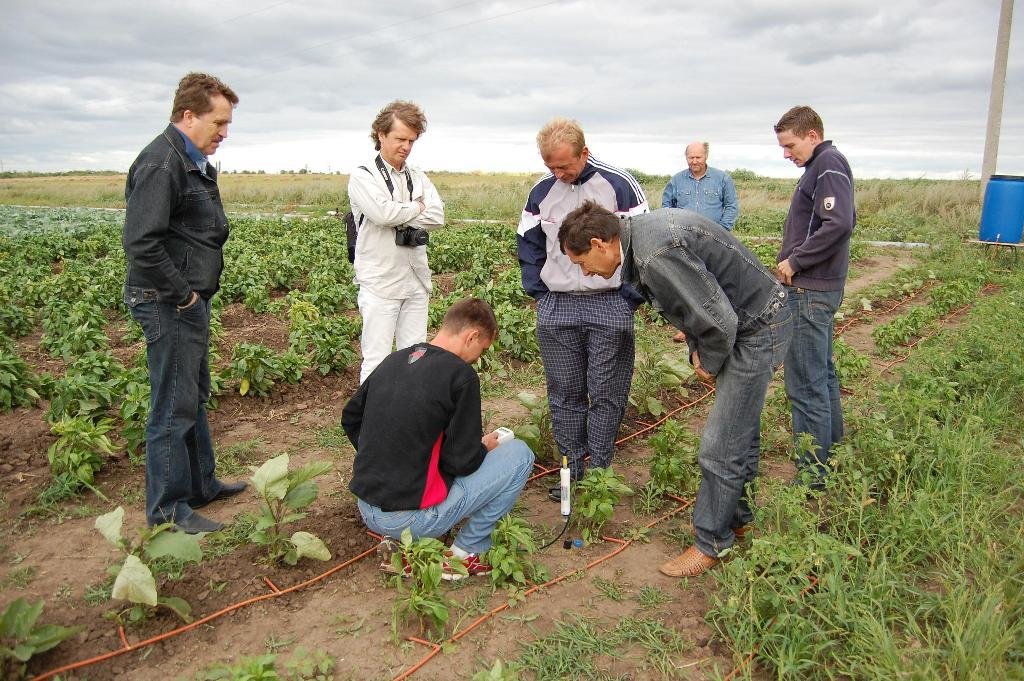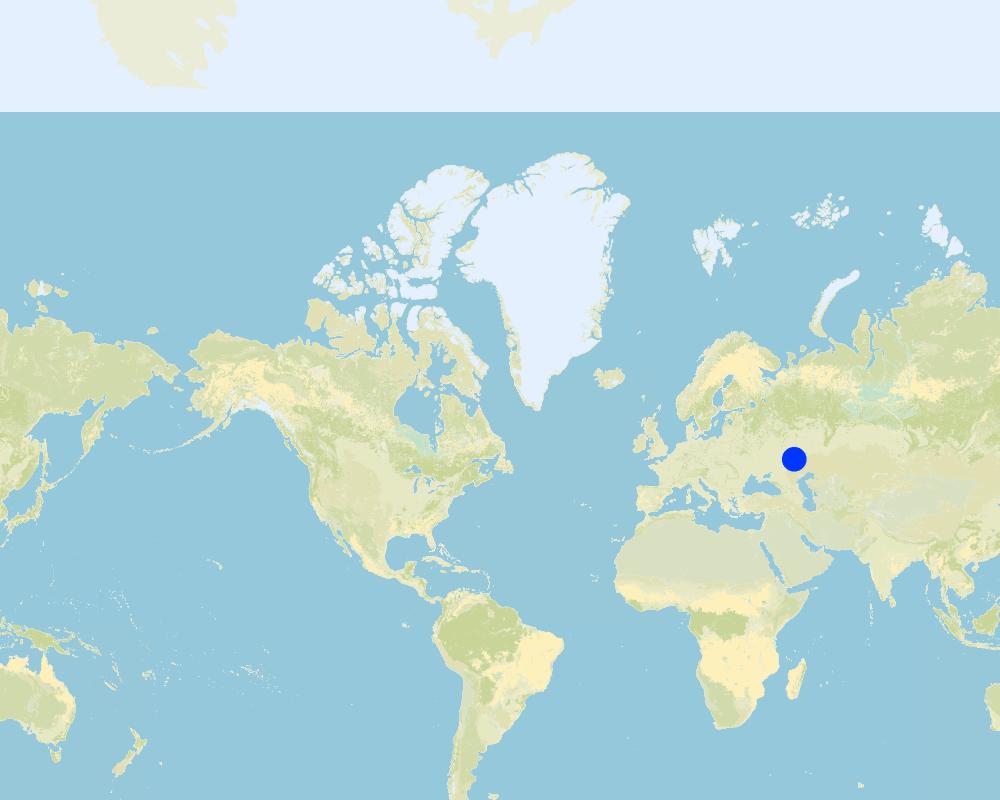Concerted thinking on common problems of water scarcity [Russie]
- Création :
- Mise à jour :
- Compilateur : Anatoly Zeyliger
- Rédacteur : –
- Examinateur : David Streiff
Жить рядом – думать об общей воде (Russian)
approaches_2426 - Russie
Voir les sections
Développer tout Réduire tout1. Informations générales
1.2 Coordonnées des personnes-ressources et des institutions impliquées dans l'évaluation et la documentation de l'Approche
Nom du projet qui a facilité la documentation/ l'évaluation de l'Approche (si pertinent)
DESIRE (EU-DES!RE)Nom du ou des institutions qui ont facilité la documentation/ l'évaluation de l'Approche (si pertinent)
Moscow State University of Environmental Engineeri (Moscow State University of Environmental Engineeri) - Russie1.3 Conditions relatives à l'utilisation par WOCAT des données documentées
Quand les données ont-elles été compilées (sur le terrain)?
27/02/2009
Le compilateur et la(les) personne(s) ressource(s) acceptent les conditions relatives à l'utilisation par WOCAT des données documentées:
Oui
1.4 Références au(x) questionnaire(s) sur les Technologies de GDT
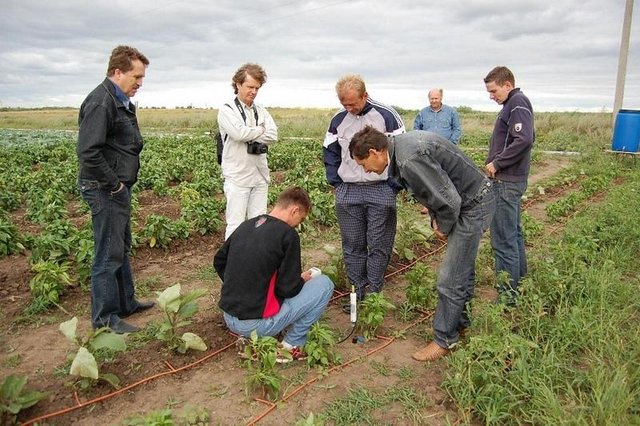
Drip irrigation [Russie]
Drip irrigation systems gradually apply water into the zone around the stem of the irrigated plant.
- Compilateur : Anatoly Zeyliger
2. Description de l'Approche de GDT
2.1 Courte description de l'Approche
Testing and disseminating of a water-saving technology like drip irrigation
2.2 Description détaillée de l'Approche
Description détaillée de l'Approche:
Aims / objectives: The objective of the Rural Development Programme (RDP) is to assist farmers who have to deal with difficult environmental conditions (drought, steep slopes) in applying sustainable farming practices either at the implementation phase or for maintenance. The programme is carried out to: 1) improve the socio-economic conditions of rural areas; 2) prevent land abandonment, and 3) prevent on-site and off-site damage caused by land degradation and erosion. To achieve these objectives, the RDP identifies different lines of action: 1) compensation for difficult natural conditions; 2) combating erosion; 3) reducing farming intensity; and 4) promoting eco-friendly agricultural practices.
Methods: The main method used in RDP is to provide farming subsidies for farming practices following a cross-compliance principle. Each line of action implies a combination of conservation measures that are subsidised, but only when applied in combination. Hence, single conservation measures outside of these lines of action are not subsidised.
Stages of implementation: Two years of testing with following phase of result dissemination.
Role of stakeholders: The level of subsidy is based on estimated implementation and maintenance costs and possible loss of productivity caused by the conservation measures. These values were obtained after consultation with various stakeholder groups including farmer organisations with agricultural cooperatives. However, because of limited resources, not all farmers will receive subsidies for conservation measures. Priority is given to: 1) farmers who have 50% of their land within the Nature 2000 network, a European-wide network of protected areas for the preservation of habitats and threatened species; 2) farmers with >50% of their land in unfavourable zones; and 3) farmers who did not receive subsidy in previous RDPs.
Other important information: Furthermore, areas with slopes of more than 20% are not subsidised in this programme since it is recommended that no agriculture should take place. Instead, reforestation of these areas is subsidised. RDPs are developed for a period of seven years. At the end of this period, a new RDP is defined and priorities and levels of subsidies may be changed. The present RDP is valid for the period 2007-2013
2.3 Photos de l'approche
2.5 Pays/ région/ lieux où l'Approche a été appliquée
Pays:
Russie
Région/ Etat/ Province:
Russia
Autres spécifications du lieu :
Pallasovsky district, Volgograd region
Map
×2.6 Dates de début et de fin de l'Approche
Indiquez l'année de démarrage:
2002
Date (année) de fin de l'Approche (si l'Approche n'est plus appliquée):
2011
2.7 Type d'Approche
- fondé sur un projet/ programme
2.8 Principaux objectifs de l'Approche
The Approach focused on SLM only
To consider the common problems of water scarcity at villages remote from water sources. To provide the best examples of water usage and initiate implementation of water-saving technologies.
The SLM Approach addressed the following problems: The main problem to be addressed by this approach is the conflicts over the common use of water supplied to the villages. In this dry area, water is scarce and has to be brought from remote rivers, lakes and artificial water storage facilities through irrigation channels. In the dry season, when water demand exceeds availability, there is a pivotal problem of poor water availability for all villagers. During the most difficult period, water even has to be transported to the villagers’ houses by car.
2.9 Conditions favorisant ou entravant la mise en œuvre de la(des) Technologie(s) appliquée(s) sous l'Approche
normes et valeurs sociales/ culturelles/ religieuses
- entrave
People do not know much about water-saving technologies. Whatever they learn about it, they are convinced that it is very complicated or too costly.
Treatment through the SLM Approach: Organization of training seminars, sharing ideas between farmers
cadre juridique (régime foncier, droits d'utilisation des terres et de l'eau)
- entrave
The existing land ownership, land use rights / water rights moderately hindered the approach implementation
3. Participation et rôles des parties prenantes impliquées dans l'Approche
3.1 Parties prenantes impliquées dans l'Approche et rôles
- exploitants locaux des terres / communautés locales
Testing of drip irrigation on their subsidiary plots, participation in monitoring activities, training and dissemination.
Owing to simple installation and control of drip irrigation, it is promising that disadvantaged people grow vegetables and fruits for their own consumption in order to improve their income and to save water for domestic use.
- organisations communautaires
Collective farmers are involved in approach for future implementation of it at vegetable plantation
- Spécialistes de la GDT/ conseillers agricoles
Agronomists as well as reseachers were involved in this approach by development scheme of applications, advising people.
- gouvernement national (planificateurs, décideurs)
Administration of the region was informed about DESIRE project activities. It supports the activities by giving advice, introduction to useful people.
3.2 Participation des exploitants locaux des terres/ communautés locales aux différentes phases de l'Approche
| Participation des exploitants locaux des terres/ communautés locales | Spécifiez qui était impliqué et décrivez les activités | |
|---|---|---|
| initiation/ motivation | interactive | SLM specialists - introducing the technology to people Planners - introducing the technology to people ready for testing it |
| planification | interactive | SLM specialists - planning of test implementation Land users - agreement to test the technology |
| mise en œuvre | soutien extérieur | SLM specialists – implementation of schemes development Land users – preparation of experimental plots |
| suivi/ évaluation | soutien extérieur | Land users - simple monitoring of drip irrigation system performance |
| Research | soutien extérieur | Land users – reporting of water used for irrigation, workload and harvested yield |
3.4 Prises de décision pour la sélection de la Technologie/ des Technologies
Indiquez qui a décidé de la sélection de la Technologie/ des Technologies à mettre en œuvre:
- principalement les spécialistes de la GDT, après consultation des exploitants des terres
Expliquez:
Within the DESIRE project field trip several meetings with stakeholders were performed. Different variant were discussed. Local land users mentioned the technology of drip irigation and ask help of expert in implementation and training.
Decisions on the method of implementing the SLM Technology were made by mainly by land users supported by SLM specialists. Method was chosen as it is saving water resources and labour time, is suitable for the local conditions and not complicated to implement.
4. Soutien technique, renforcement des capacités et gestion des connaissances
4.1 Renforcement des capacités/ formation
Une formation a-t-elle été dispensée aux exploitants des terres/ autres parties prenantes?
Oui
Spécifiez qui a été formé:
- exploitants des terres
Formats de la formation:
- zones de démonstration
- réunions publiques
Thèmes abordés:
drip irrigation technology, knowledge about varying quantities for plants during the growing season according to the hydrological cycle, etc.
4.2 Service de conseils
Les exploitants des terres ont-ils accès à un service de conseils?
Oui
Spécifiez si le service de conseils est fourni:
- dans les champs des exploitants?
Décrivez/ commentez:
Name of method used for advisory service: Drip irrigation technology; Key elements: Water cycle: elaborated and explained to stakeholders during an initial stakeholder workshop as well as during field visits, Water-saving technologies: explained to stakeholders during stakeholder workshops. They were based on conceptual approaches and data gathered during field monitoring
Advisory service is quite adequate to ensure the continuation of land conservation activities; The government cannot provide special services in order to ensure its continuation; however, farmer-to-farmer dissemination is working.
4.3 Renforcement des institutions (développement organisationnel)
Des institutions ont elles été mises en place ou renforcées par le biais de l'Approche?
- oui, modérément
Spécifiez à quel(s) niveau(x), ces institutions ont été renforcées ou mises en place:
- local
Précisez le type de soutien:
- renforcement des capacités/ formation
Donnez plus de détails:
The local administration organized some demonstration and training activities for local users.
4.4 Suivi et évaluation
Le suivi et l'évaluation font ils partie de l'Approche? :
Oui
Commentaires:
Bio-physical aspects were ad hoc monitored by government through measurements; indicators: through farm visits and sampling of soils for chemical parameters (for example to control for ecological farming practices)
Technical aspects were ad hoc monitored by land users through observations; indicators: Comparison of water consumption using drip irrigation and furrow irrigation. The very high water efficiency as well as the minimal rate of water used for crop growing by drip irrigation was clearly demonstrated.
Economic / production aspects were monitored through measurements; indicators: by comparing production between years
There were no changes in the Approach as a result of monitoring and evaluation
There were several changes in the Technology as a result of monitoring and evaluation: Some changes were made as a result of bio-physical monitoring of plant development according to water quantities, fertilizer application, etc.
4.5 Recherche
La recherche a-t-elle fait partie intégrante de l’Approche?
Oui
Spécifiez les thèmes:
- technologie
Donnez plus de détails et indiquez qui a mené ces recherches:
The implementation of drip irrigation technology under local conditions was performed by a team from the Moscow State University of Environmental Engineering under the framework of the EU-DESIRE project.
Research was carried out both on station and on-farm
5. Financement et soutien matériel externe
5.1 Budget annuel de la composante GDT de l'Approche
Si le budget annuel précis n'est pas connu, indiquez une fourchette:
- 2 000-10 000
Commentez (par ex. principales sources de financement/ principaux bailleurs de fonds):
Approach costs were met by the following donors: international non-government (EU research project DESIRE): 100.0%
5.2 Soutiens financiers/ matériels fournis aux exploitants des terres
Les exploitants des terres ont-ils reçu un soutien financier/ matériel pour la mise en œuvre de la Technologie/ des Technologies?
Oui
Si oui, spécifiez le(s) type(s) de soutien, les conditions et les fournisseurs:
Agricultural activities are subsidised by government
5.3 Subventions pour des intrants spécifiques (incluant la main d'œuvre)
- équipement
| Spécifiez les intrants subventionnés | Dans quelle mesure | Spécifiez les subventions |
|---|---|---|
| machines | entièrement financé | |
| outils | entièrement financé | |
Si la main d'œuvre fournie par les exploitants des terres était un intrant substantiel, elle était:
- récompensée avec un autre soutien matériel
Commentaires:
Materials (pipes for irrigation system, water tank) for the implementation of the experimental plots were supplied to land users. Some of the land users’ activities, like monitoring of soil water capacity, were paid with small amounts of cash. Other work was implemented voluntarily.
As this drip irrigation is in a testing phase, the materials for the irrigation system were financed by the project and not by the land users.
Labour was also paid in cash or sometime it was voluntarely.
5.4 Crédits
Des crédits ont-ils été alloués à travers l'Approche pour les activités de GDT?
Non
6. Analyses d'impact et conclusions
6.1 Impacts de l'Approche
Est-ce que l'Approche a aidé les exploitants des terres à mettre en œuvre et entretenir les Technologies de GDT?
- Non
- Oui, un peu
- Oui, modérément
- Oui, beaucoup
decreased water use
Est-ce que l'Approche a autonomisé les groupes socialement et économiquement défavorisés?
- Non
- Oui, un peu
- Oui, modérément
- Oui, beaucoup
It enables people with low income to avoid having to buy vegetables in the market by growing them for their own use and for sale.
Did other land users / projects adopt the Approach?
- Non
- Oui, un peu
- Oui, modérément
- Oui, beaucoup
Land users share their knowledge and experience with each other. Where this occurs, drip irrigation disseminates amongst the stakeholders.
Did the Approach lead to improved livelihoods / human well-being?
- Non
- Oui, un peu
- Oui, modérément
- Oui, beaucoup
Possibilities to grow vegetables, to increase their income and to diversify their food.
Did the Approach help to alleviate poverty?
- Non
- Oui, un peu
- Oui, modérément
- Oui, beaucoup
The practice allows people to produce food on their subsidiary plots.
6.2 Principale motivation des exploitants des terres pour mettre en œuvre la GDT
- augmenter la production
by using this technology people can increase food production.
- well-being and livelihoods improvement
People want to save water, but also to improve their well-being
6.3 Durabilité des activités de l'Approche
Les exploitants des terres peuvent-ils poursuivre ce qui a été mis en œuvre par le biais de l'Approche (sans soutien extérieur)?
- oui
6.4 Points forts/ avantages de l'Approche
| Points forts/ avantages/ possibilités du point de vue de l'exploitant des terres |
|---|
| increasing the well-being of people (How to sustain/ enhance this strength: Table of land users become more rich by vegetable, some vegetables can be sold on the market) |
| Labour time saving (How to sustain/ enhance this strength: Giving people more time for others activities) |
| water saving (How to sustain/ enhance this strength: Implementation of water saving technologies) |
| Points forts/ avantages/ possibilités du point de vue du compilateur ou d'une autre personne ressource clé |
|---|
| Increasing the well-being of people: food availability for land users becomes enriched in terms of vegetables and some vegetables can be sold on the market (How to sustain/ enhance this strength: Dissemination of these opportunities to other people) |
| Reduction of labour input (How to sustain/ enhance this strength: Giving people more time for other activities) |
| Combating land degradation (How to sustain/ enhance this strength: sharing this knowledge with other users) |
| Sharing water-saving knowledge with other users (How to sustain/ enhance this strength: Implementation of water-saving technologies and dissemination of these skills to neighbours.) |
| Concerted thinking by stakeholders on common problems of water scarcity in villages remote from water sources (How to sustain/ enhance this strength: Provide best-practice examples of water usage and initiate implementation of water-saving technologies ) |
6.5 Faiblesses/ inconvénients de l'Approche et moyens de les surmonter
| Faiblesses/ inconvénients/ risques du point de vue du compilateur ou d'une autre personne ressource clé | Comment peuvent-ils être surmontés? |
|---|---|
| Relatively high starting implementation costs |
7. Références et liens
7.1 Méthodes/ sources d'information
- visites de terrain, enquêtes sur le terrain
- interviews/entretiens avec les exploitants des terres
7.2 Références des publications disponibles
Titre, auteur, année, ISBN:
Zeiliguer, A., G. Sokolova, V. Semeonv, O. Ermolaeva. Results of field experimentations at 2008 to grow tomatoes under drip irrigation at Pallasovsky District of Volgograd Region. Proceeding of conference at MSUEE. 2008, p. 45-56
Liens et modules
Développer tout Réduire toutLiens

Drip irrigation [Russie]
Drip irrigation systems gradually apply water into the zone around the stem of the irrigated plant.
- Compilateur : Anatoly Zeyliger
Modules
Aucun module trouvé


